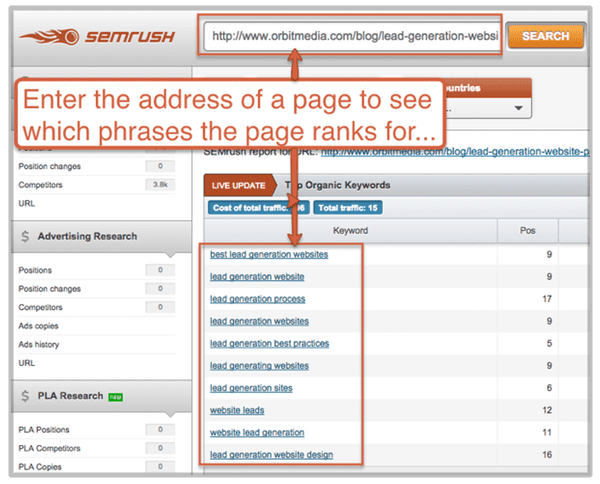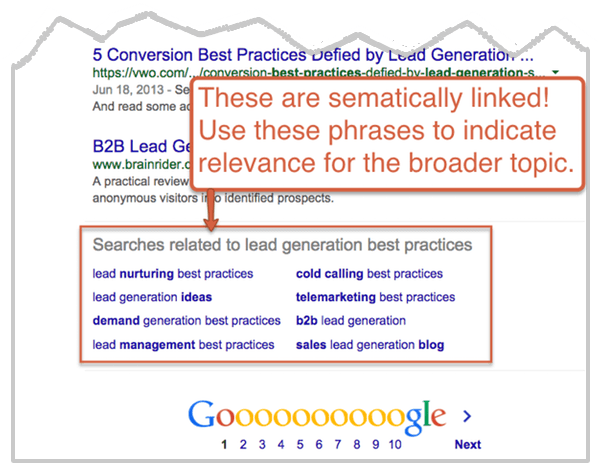SEO is slow. It can take years to build up the authority of a domain and the rankings of pages. Search engine optimization is the slowest form of marketing I know. It really is.
But there’s one big shortcut.
This post is a step-by-step guide to improving your Google rankings quickly. It’s the only fast SEO tactic that I know of. If you’ve never done it before, there may be huge opportunities to improve your Google rankings. The key is in your AnalyticsMake sense? Here’s the summary again, then we’ll go into detail.
- Find the phrases for which you almost rank high.
- Find the page in Google search results. Confirm the ranking.
- Next, improve the page by better indicating the relevance for the phrase.
- Check back and see if it worked.
It’s very fast. There is no need to research keyphrases since Analytics will give us the phrase. No need to check competition, because it’s already ranking in Google. That’s why this is the fastest way to increase Google rankings with the smallest possible effort.
The entire process will take you five to ten minutes. Sound good?
1. Take a look at the “Queries” report
First, let’s find the phrases that you’re almost ranking high for. It’s in Google Analytics in this report: Acquisition > Search Console > Queries.
Note: if you aren’t able to access this report, you probably haven’t connected your Search Console account to Google Analytics. There’s a video here that shows how to set this up.
This report shows:
- all the phrases you rank for
- the number of times you’ve appeared in Google (impressions)
- the number of times your pages have been visited from these phrases (clicks)
- how high you rank for the phrase (average position).
- last two days. Set your date range to cover three full months to get as much data as possible.
2. Set an advanced filter
We’re looking for phrases that already rank in Google, but could use improvement. We need to use an Advanced Filter to find just the phrases for which we rank high, but not too high.Here’s what that filter looks like.The idea is that a page that ranks greater than 10 is high on page two. This assumes that there are 10 organic search listings on page one, which really isn’t the case, but it’s close enough for us to make this work.In other words, this filtered report asks Google Analytics this question: “What phrases do I rank for on page two?”Where’s the best place to hide a dead body? Page two of Google. (tweet this)No one wants to rank on page two, but the good news is, high on page two is almost page one. You’re right below a tipping point. This is low hanging fruit!3. Sort the report by rankings
Click the column header “Average Position” to sort the report. Actually, you’ll have to click it twice so you can see the 11s at the top.ProTip! Make an Analytics “Shortcut”
Save your filtered, sorted Queries report as a shortcut. This will make it easier to get to next time. Just click the “Shortcut” link above the report, name it and click OK. Now the report will be available anytime in the left side navigation of Google Analytics.4. Dig through this list, find phrases and confirm the rankings
You’ll quickly notice that this report shows some strange phrases. Things that seem irrelevant. Don’t worry about them. Every site ranks for unrelated phrases. Just ignore them and keep looking.This report may also show phrases that include your brand name. Skip past those too. Search engine optimization is about ranking and getting traffic from non-branded phrases.Ideally, you’ll find some buyer-related keyphrases. Remember, there are two kinds of keywords…- Question Marks
Phrases entered by people who are researching a problem, without yet knowing how they want to solve it.
Example: “why does cold water hurt my teeth?” - Dollar Signs
Phrases entered by people who know how they want to solve their problem and are looking for a presumed solution. They are often ready to spend money.
Example: “emergency dentist chicago”
The money (as in, the leads) are in the buyer-related phrases!Find a few? Great. Let’s move on.5. Confirm your rankings
Start searching for the phrases in Google to confirm your rankings. Now you’ll notice that the “average position” really isn’t the same as rankings. Sometimes, you’ll see yourself ranking higher than the report suggests. Other times, you won’t see your site at all.There are a lot of reasons for the discrepancies.- Your site may have more than one page that ranks for the phrase.
- Your site may rank in image search results.
- Your site may rank differently today than the average ranking across the date range in the report.
- Your search results may be personalized for you based on your location, browsing history, etc.
You can avoid that last issue by doing a few things before you search: logging out of Google, using “private” or “incognito” settings in your browser, using a browser you don’t usually use, using a proxy server to connect to Google or using Google’s Ad Preview tool.Note: Really, there is no such thing as an entirely neutral search. That’s why A/B testing for Google rankings is impossible. There are actually many versions of Google out there! So don’t worry too much about trying to be anonymous.Don’t expect the data to be accurate. You’re just looking for clues.Find a page that ranks for a phrase, but not too high? Great. Let’s keep going!6. Check to see how the phrase is used on the page
Now we want to see how well the page was optimized for the phrase. Does the phrase appear on the page in the right places? Was the page indicating relevance?It’s possible that the phrase hardly appeared on the page at all. It’s possible the ranking was completely accidental.If so, you now have an opportunity to indicate the relevance and improve the rankings with very little effort. Here’s how to check:While viewing the page, search for the phrase (using control+F or command+F on a Mac) just like you would inside a Word document.- Does the phrase appear on the page?
- Does it appear all together, or is it broken up?
- Where does it appear? In the title, header and body text?
- How many times is it used in each location?
If the phrase isn’t in the title, header and body text, then this page wasn’t really optimized. The Google rankings were accidental.Find that the page isn’t well optimized? Great! But first…Warning: Before you proceed, check to make sure that this page isn’t already ranking for other phrases. It’s possible to indicate the relevance for one phrase and hurt the relevance for another phrase.To make sure you don’t de-optimize it, go back to your Queries report and look for other phrases the page might rank for. Search for these phrases in Google. Or just enter the page address into SEMrush. This will tell you all the phrases the page ranks for and how high. That’s great data! If the page already ranks for another phrase, check the volume in the Google Keyword Planner. Is the phrase more popular? Is it a more relevant phrase that may bring more targeted traffic?If either answer is yes, don’t hurt the relevance for this phrase. Go back to the beginning and start again, or proceed to the next step using the better phrase.
If the page already ranks for another phrase, check the volume in the Google Keyword Planner. Is the phrase more popular? Is it a more relevant phrase that may bring more targeted traffic?If either answer is yes, don’t hurt the relevance for this phrase. Go back to the beginning and start again, or proceed to the next step using the better phrase.7. Improve the page and indicate the relevance for the phrase
Search engine optimization is all about indicating relevance. We indicate relevance using on-page SEO best practices, which we’ll summarize here.- Use the keyphrase once in the page title
This is the <title> tag, which appears in the code, but not on the page itself. It does show up in the browser tab and it’s often the clickable link in Google search results. If your site is in WordPress, the titles may be managed within a plugin such as Yoast.Ideally, the target phrase appears at the beginning of the title and words of the phrase are kept together, with no words breaking it up. - Use the keyphrase once in the header
This is the <h1> tag, which is generally the headline on the page. - Use the phrase several times in the body text
There is no magic number for keyword frequency, but high ranking pages tend to be long, with 1500 – 2000 words. Remember, Google is a research tool built by library scientists. Google loves text!If your page is 1500 words, it’s likely that four to six instances of the phrase feels natural. If the page is short, don’t try too hard to fluff it up by adding length. But make sure the phrase appears at least once, all together as a “bonded” keyphrase.
#Bangalore #Escorts
"이용이유가생기는곳 먹튀검증 안전노리터 go"
ReplyDelete